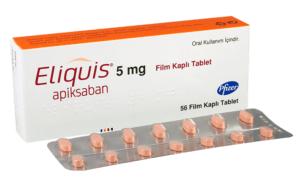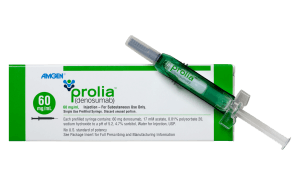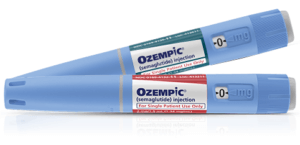 For most people, when they hear the word “fat,” it immediately brings up negative emotions. But the truth of the matter is that not all body fat is bad!
For most people, when they hear the word “fat,” it immediately brings up negative emotions. But the truth of the matter is that not all body fat is bad!
In modern times, the Western idea of the ideal body shape is generally considered tall, slim, and fit. This image has been perpetuated in the media and advertising and is highly influenced by the fashion industry. Fashion designers create clothing designed to look best on young, tall, slim models, which has profoundly impacted our perception of what makes an “ideal” body shape. Similarly, the fitness industry promotes a muscular physique as the ultimate ideal of physical beauty, and this has also contributed to the idealization of a slim and toned muscular body.
This has led to an explosion in interest in weight loss by many – in fact, by any – means. Crash diets, food substitutes, exercise regimes, and pills are promoted endlessly and sometimes aimed at the most vulnerable people – those unhappy about their body shape. However, scientists have long known that not all body fat is bad. In fact, having the right kind of body fat can be more important than having less fat overall.
What’s more, the distribution of fat around the body takes on increasing significance as people age. The positive vibes a person may get while adoring a healthy newborn with rolls of baby fat all over their bodies will likely be less “adorable” for an older person evaluating their own body, even though the quantity and location of the body fat is basically the same.
The human body requires a certain amount of different kinds of body fat to function properly, and not all body fat is bad. Taking a reasoned approach before launching into a life-changing form of diet, exercise, or medication is much more beneficial. In our view, a discussion of body fat needs to start with some basic facts about the type of fat built and stored around the body. Consider these points and then discuss your plans with your healthcare provider, who knows your whole-health picture.
More about body fat
Body fats are crucial to human health. They’re stored under the skin, in muscles, and around vital organs. Having the right combination and volume of body fat contributes to overall body health and function.
There are different types of fat, each with its unique role in maintaining optimal conditions in the body. It is important to understand that not all fat is bad and that a person should focus on maintaining a healthy balance rather than simply losing weight.
- Essential body fat is necessary for many core functions, including hormone regulation and insulation. As indicated by the name, essential body fat is good.
- White body fat is the main type of fat and usually comprises more than half of the body’s total fat mass. There are several types of white body fat:
- Visceral fat is found around the internal organs, and high levels can contribute to a range of health problems, such as high blood pressure and diabetes, if it builds up in excessive amounts. The bottom line is that too much visceral fat is not good.
- Subcutaneous fat is located under the skin and serves as insulation and a source of energy storage in the body. Too much subcutaneous fat should be avoided, but at the same time, it is necessary to maintain adequate levels otherwise, there may be risks to general health.
- Brown body fat is abundant in babies and should also be present in lower levels in adults. It promotes the conversion of stored fatty acids into energy.
- Beige (or brite) body fat is a mixture of white and brown body fat. It responds to cold temperatures, stress, and some hormones and helps transform stored fats into energy. It can help burn fat rather than store it.
Since body fat is necessary for many body functions, a deficit can lead to health problems like poor vitamin absorption, weakened immunity, and hormone imbalances. Too little body fat can compromise physical and physiological health, increasing the risk of chronic health problems. Conversely, any excess fat is likely to be stored as visceral or subcutaneous fat, which carries its own health risks.
Essential body fat
While it’s possible to have too much total body fat, a person cannot have too much essential body fat, as the body regulates it.
Essential body fat is vital for normal body functions. It should comprise 12% -15 % of total body weight in healthy women and about 3% -5 % for men. It is found in lipid-rich tissues (bone marrow, organs such as the heart, lungs, liver, spleen, kidneys, intestines, and muscles). Its main function is to store energy in the form of lipids that are easily converted into energy when needed. It also protects internal organs and helps to insulate the body.
This type of fat plays a major role in reproductive functions. Healthy women normally have a higher proportion of body fat than men. This additional fat is mostly stored in the breasts, hips, thighs, and buttocks. It plays an important role in fertility, childbearing, and related hormonal functions. It’s essential for nurturing the fetus during pregnancy and breastfeeding after childbirth. It also provides the necessary energy reserve during these physically demanding periods.
For men, a body fat percentage lower than normal can compromise a man’s health and functionality. This fat plays a crucial role in hormone regulation, especially testosterone.
White body fat
White fat is the most abundant type of fat in the body. It comprises subcutaneous, brown, beige, and visceral fat. White fat serves three functions: it provides the largest energy reserve in the body; it insulates and cushions the body to protect it from cold temperatures and injury; and it promotes the secretion of hormones that serve as signals to other body systems.
- Visceral body fat
- Visceral fat, often called ‘belly fat,’ is a type of body fat stored within the abdominal cavity. It’s packed around the internal organs (liver, stomach, and intestines), sometimes called ‘organ fat.’ While some visceral fat is necessary for cushioning the abdominal organs against sudden movement, too much can pose serious health risks. Too much visceral fat can represent a “bad” risk, especially since it is largely hidden and may only show up when diseases occur.
- A specific feature of visceral fat is that it is metabolically active, which means it can significantly impact health. Excess visceral fat is associated with insulin resistance, which can lead to type 2 diabetes and heart disease. It can also lead to increased inflammation in the body and higher blood pressure. As a result, it can be a trigger for cardiovascular diseases.
- Subcutaneous body fat
- Subcutaneous fat is the fat layer found directly beneath the skin. It’s the fat around the belly, thighs, arms, neck, and anywhere else visible on the body. When people talk about “ugly” body fat, they usually talk about subcutaneous fat.
- This fat serves several important roles, including acting as an energy reserve, providing insulation to regulate body temperature, and serving as padding to protect the muscles and bones from the impacts of bumps or falls.
- Unlike visceral fat, a moderate amount of excess subcutaneous fat is not typically considered dangerous. However, having grossly excessive amounts of subcutaneous fat can be harmful. It may indicate other systemic problems related to obesity and its associated health problems, such as type 2 diabetes, heart disease, and certain types of cancer. But, it’s important to note that these risks are generally lower than those posed by excess visceral fat.
- Too little subcutaneous body fats can also cause some risks, especially in older people, who are already at risk of bone damage in case of slips, bumps, or falls. As people get older, they typically develop osteoporosis, which makes their bones brittle and more likely to fracture at the slightest pressure. If they are also losing weight, this can strip away the padding around vulnerable bone structures like the hips, shoulders, and long bones.
- Brown body fat
- Brown body fat is functionally different from other body fats. Unlike white fat, which stores calories, brown fat burns calories to produce heat, making it a ‘good’ type of fat. Brown fat is abundant in newborns to help them regulate body temperature but decreases with age. Adults retain brown fat, typically in the neck and upper chest area. While brown fat’s primary function is to burn calories, it can also help improve insulin sensitivity and regulate blood sugar levels. Athletes and physically active people are more likely to have a higher proportion of brown fat than less active individuals. Activating brown fat improves energy metabolism and can improve performance and recovery in athletes.
- Beige body fat
- A special white fat type is beige (or brite) fat. It is a type of white fat that can transform when the body is exposed to cold temperatures or certain hormones to behave like brown fat. Beige fat cells contain a mix of white and brown fat cells, hence their name. Beige fat, like brown fat, also burns calories to produce heat.
Keeping healthy by maintaining an optimum body fat balance
While too much or too little body fat may be more or less of a concern, depending on the type of fat and the age of a person, it’s still important to manage its levels in the body. Balance is key, as too little can lead to problems such as susceptibility to skin damage and sensitivity to cold, while too much can contribute to obesity and its related health issues, such as diabetes and cardiovascular disease.
It is important to note that maintaining a healthy balance of all types of fat is crucial for promoting optimal health. Too much visceral fat can lead to a range of health problems while having too little essential fat can also negatively impact overall health. To maintain a healthy balance, engaging in regular exercise and following a balanced diet is recommended.
Frequently Asked Questions
What are examples of essential body fat?
Essential fat is vital for the body to function normally. It is made up of brown, white, or beige fat and is found in most organs, muscles, and the brain and central nervous system.
What is the difference between body fat and essential fat?
Essential fat is found throughout the central nervous system, in bone marrow, and internal organs such as the heart, lungs, liver, spleen, kidneys, intestines, and in muscles. Essential fat is necessary for normal bodily functioning.
What are the health risks of visceral fat?
Excess visceral fat inside the abdomen may be a sign of metabolic syndrome, a collection of disorders such as insulin resistance, high blood pressure, obesity, and high cholesterol. These increase the risks of type 2 diabetes, stroke, and heart disease.
Can you be skinny and have high visceral fat?
Every body is different. Even thin people can still have excess visceral fat, so being skinny doesn’t necessarily mean a person is healthy. People can have a genetic predisposition towards higher body fat percentage and lower muscle than others. Age, hormones, and exercise can all contribute to body fat distribution.
Does lack of estrogen cause belly fat?
Estrogen has some effect on where fat is located in the body. As women age, their estrogen levels fall, and they may notice an increase in belly fat even if they are not gaining weight.
















